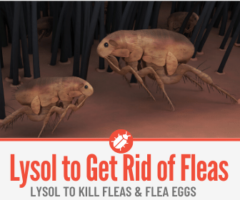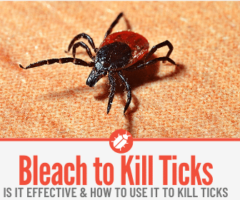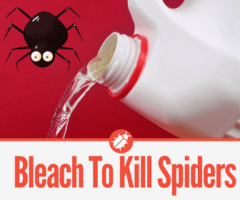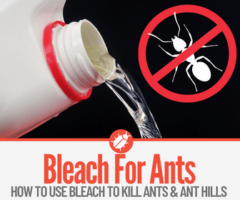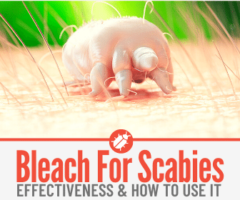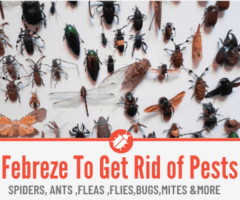 If you own furry pets, then like every other pet mom or dad, you might be concerned about fleas.
If you own furry pets, then like every other pet mom or dad, you might be concerned about fleas.
These miniature bugs can cause a lot of scratching, itching and will generally make your pet (not to even talk about you) very miserable.
We Will see If you can Use Bleach to kill fleas, after all it’s very inexpensive and readily available,
Not only we will see If bleach kill fleas but also how you should go about doing it.
Does bleach kill fleas?
Bleach Does kill fleas – if you use it right. It turns out that bleach is quite effective in killing both adult fleas, flea eggs, and a few other bugs as well. I’ll share how bleach works to kill fleas, how you should use it plus a few more ideas to help you become flea-free!
Besides creating a nuisance and gorging on the blood of your favorite pet or even you, some flea infestations are quite serious and can be very difficult to deal with. It can also cause serious health problems for your pet – especially if your pet manages to swallow an adult flea – that can cause a Tapeworm infection.
You could also get bitten by fleas that you get from your pets, or from a flea-infested environment. You don’t want that to happen at all – flea bites do itch a lot and if you scratch it too much, it can lead to an infection.
Moreover, fleas are well known to carry diseases – in fact, fleas were really the main culprits responsible for spreading the bubonic plague in the mid-14th century. That hasn’t changed much now.
Given how serious it is, you want to know all your options.
Also read: Does Lysol Kill Fleas
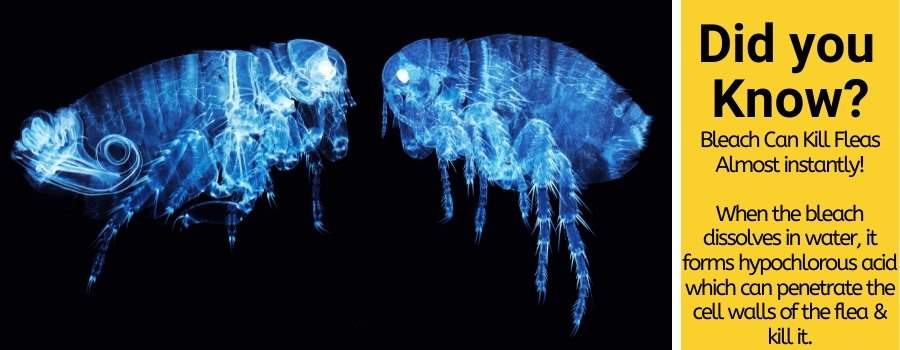
How do you Use Bleach to Kill Fleas
The first you should know about using bleach is that it is not a 100% fail-safe method. Bleach is most effective if you can drown all the fleas in the bleach solution. But that is not usually possible (you can’t exactly soak your entire house in bleach, can you?).
Before starting your bleach attack on fleas, you should:
Make sure that you’re dealing with fleas.
One common sign of flea infestation is constant scratching and falling hair from your pests. But scratching can also be caused by mange, ticks, or even seasonal allergies. To confirm that you’re really dealing with fleas, check:
- If you can see them on your pet, pet beddings, or floor rugs. Adult fleas are about 1/8-inch-long and have a reddish-brown color. So, if your pet has a light-colored fur, you should be able to easily see the fleas.
Fleas are good jumpers, so they may start jumping off your pet when you start checking.
- If you see “flea dirt”. Flea dirt is actually flea feces. It looks like tiny flakes of ground black pepper and contains undigested blood from the fleas’ blood meal. Check the carpet, pet beddings, and rugs for specks of flea dirt.
- If you’re getting bitten by fleas. The saliva from the mouths of fleas, cause irritation, known medically as Flea Allergy Dermatitis FAD, which is what causes the incessant scratching.
Related: Does Bleach kill Ticks
Know where the fleas are.
Fleas love to hang out in dark damp areas away from sunlight. Pay special attention to areas that do not get much sunlight. Probe underneath carpets and in between cracks. Don’t forget to check where your pet sleeps and even where you and your family sleep or spend a lot of time.
Now, you’re ready for your attack! Follow these steps to start using a bleach solution to kill fleas.
Step 1: Clear the house. Remove all your pet animals – including fish if you have any, from the room or area where you intend using the bleach. Fumes from bleach are toxic, so no one should remain inside the room for at least 3 hours after spraying.
Make sure the room is well ventilated after you finish spraying the bleach solution. Open the windows, fans can also help
Step 2: Wear protective gear – long-sleeved shirts, gloves, rubber shoes – check all these items off.
Step 3: Make your bleach solution.
- You can make an effective 1:10 bleach solution by mixing 1 cup of sodium hypochlorite bleach with 5 gallons of water. Add water and bleach proportionately until you get the desired amount of bleach solution.
Step 4: Vacuum the floor focusing especially on carpets and rugs. It removes “flea dirt”, which is what the immature fleas feed on. Vacuuming also helps to make sure that hidden flea eggs are removed by the powerful suction in the vacuum cleaner. And it makes it easier for the bleach spray to get to the roots of the carpet and kill any remaining flea eggs.
Step 5: Use a spray bottle to spray the bleach solution around the house. Make sure you spray down the areas where fleas tend to gather and especially where they lay eggs.
Step 6: Wash any infested clothing and pet beddings in hot soapy water – add bleach if safe – and dry it properly.
You may have to repeat the spraying regularly, over a few weeks to a month until you are sure that the infestation is over. Be careful though when using bleach as it can change the color of wood flooring or other furniture.
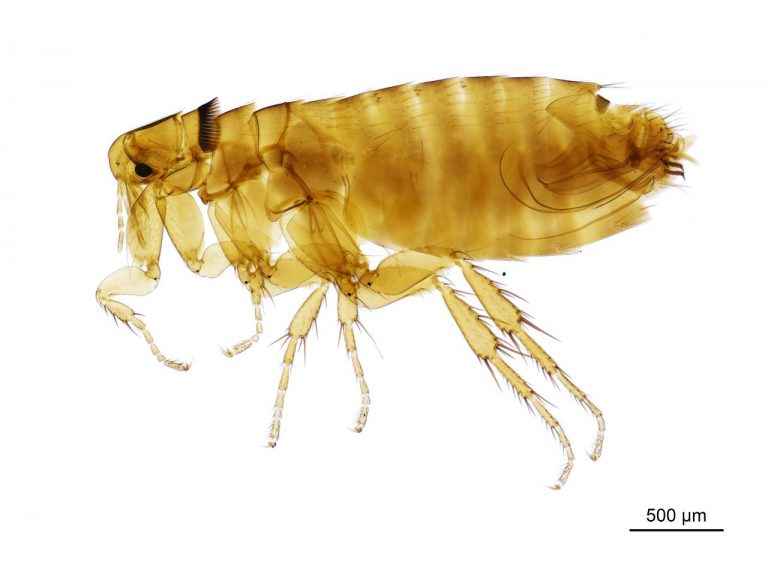
Does Bleach Kill Fleas Instantly?
Yes, bleach can kill fleas almost instantly. Bleach contains sodium hypochlorite which is corrosive in the strong concentrations. When the sodium hypochlorite dissolves in water, it forms hypochlorous acid which can penetrate the cell walls of the insect and kill it.
The gas it produces can also strangle the tiny bugs. When sodium hypochlorite bleach touches your skin, it causes a mild irritation or in stronger concentrations, a skin burn. But the effect of bleach on insects is quite deadly.
However, the toxic chemicals quickly break down to form salt and water, so you must make sure you’re spraying as close to the bugs as you can. It’s usually best if you can hit them directly.
How Long Does It Take Bleach to Kill Fleas
Bleach can kill fleas in mere seconds. How fast it kills, really depends on the concentration of the bleach. The stronger the concentration, the more effective it is. Of course, the danger with stronger concentrations of bleach, is that the risk of harm to you increases and because strong bleach is more corrosive, it can cause damage to some objects in the house.
Will bleach kill fleas on cement
Bleach will kill fleas on cement and anywhere as long as sufficient amounts of the solution touch the flea. In fact, concrete floors make it easier to kill the fleas since they can’t burrow into a carpet or get away easily. They are fast though, so you should be quick with your can of bleach spray.
Does Bleach Kill Fleas Outside
Bleach can kill fleas outside as long the solution comes in contact with the fleas. While it is can be useful, there are other things you should do if you want to make sure that your yard is free from fleas.
Fighting a flea infestation in the open yard is quite different from simply spraying a solution of bleach to kill fleas inside your house. So, how do you stop a flea infestation that’s in your backyard?
How to Get Rid of Fleas in the Yard
Your new pet has just spent a day or two out in the yard playing happily or napping lazily. But then you notice something strange. Your pet is just scratching and biting at itself – incessantly.
It doesn’t stop even when you try to soothe it. You suspect fleas, but you’re not sure. So, you check and – surprise! It’s fleas! The tiny bugs jump onto your hands when you try to rub your pet and you see tiny flecks of reddish-brown dust. Flea bites irritate your skin and you might begin to scratch the itch alongside your pet.
“How come,” you wonder?
You see, fleas, like moist shady places. They will breed quietly in the damp, shady corners of the yard – especially if your yard is overgrown or does not receive enough sunlight. And when your pet spends time playing or sleeping where the bugs are, they will jump onto your pet (or even you) and promptly begin gorging on their blood. The females will lay eggs that your dog may carry to other parts of the house.
If you’re having this problem, here are some things you can do to help you get rid of the fleas in your yard.
- Trim the “bush” in your yard. If you have an overgrown yard, then you have the perfect environment for fleas to thrive. Keeping the grass low is the first step to dealing with fleas in your yard.
- Next, cut down any low hanging branches, basically anything that blocks too much sunlight – especially in damp areas. Fleas tend to stay away from direct sunlight, so exposing your yard to as much sunlight as possible can drastically reduce the flea population.
- You can now spray insecticides to kill any remaining pests. Effective flea killers usually contain pyrethrin which is generally considered to be reasonably safe for humans especially when dry.
Fleas can multiply quickly. In the right conditions, it can take as little as 30 days for flea eggs or as much as a year to progress into the adult stage. Adult female fleas will start laying new eggs in as little as 2 days after the first feed from their host.
Because of this, you should use Insect Growth Regulators (IGRs) to kill flea eggs, larvae, and pupa before they mature. This is a very important part of your “flea-free” fight.
- I know it’s beginning to sound worn already, but really fleas like warm moist or damp areas. Using desiccants that absorb moisture and dehydrates the fleas is a very effective way of fighting against fleas. Sprinkle diatomaceous earth around your yard, especially at the spots where fleas tend to breed.
Diatomaceous earth works best when it is dry. So, consider using it if you live in an area that is not usually wet.
- Some other simple home remedies for getting rid of fleas from your yard include using natural predators of fleas like beneficial nematodes. These nematodes can infect fleas with bacteria that kill them within one to two days.
- Consider watering your yard regularly as it can also help you control fleas. Watering down your yard will help flush away hidden larvae, flea eggs, and the feces that they feed on.
- One effective and relatively cheap home remedy for preventing flea infestation is to simply drop cedar wood chips around the house and in your yard. It is a natural, non-toxic flea repellent that can save you tons of stress and work in maintaining a flea-free yard.
Use cedar chips with caution however, because it can cause an allergy or irritate you or your pet.
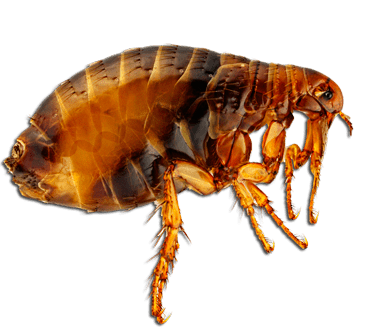
Related Questions
Does Chlorine Kill Fleas? Chlorine is a much more concentrated form of bleach and so it will be even much more effective than a typical bleach solution in killing fleas. Bleach usually contains about 5 or 6% chlorine, so if bleach is effective against fleas, you can be sure that chlorine can kill fleas too – probably faster.
Does Clorox Kill Fleas? Clorox is simply branded bleach, so it kills fleas just as well as bleach (which it is) does. Dilute about ¼
Does Bleach Kill Termites? Termites are another group of bothersome pests that infest buildings and can cause a lot of damage. Bleach is not only effective against fleas, but it can also kill termites. While bleach can kill fleas, it is probably not your best option for controlling a termite infestation.
Bleach is effective on a wide range of germs, viruses, and insects, including ticks, which are a close blood-feeding cousin to fleas. Bleach is a lot safer because it breaks down quickly to form only salt and water. While bleach can kill the insects, it may not be the most effective way to deal with fleas and you might need to ask professionals for help – especially as it can take some time to completely get rid of the pests.
Chlorine-based bleach is a very important disinfectant and is widely used for cleaning both household items and medical supplies.

